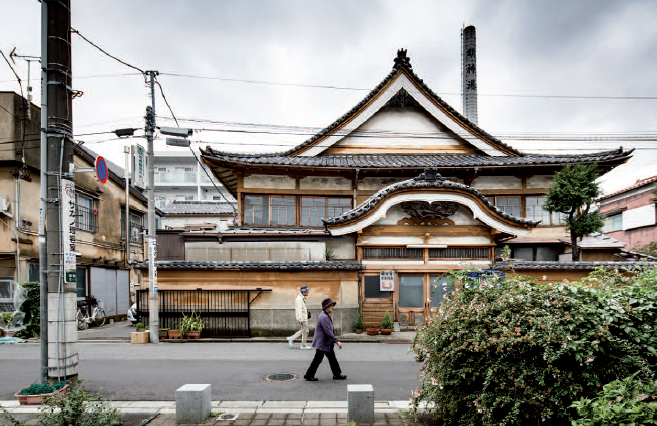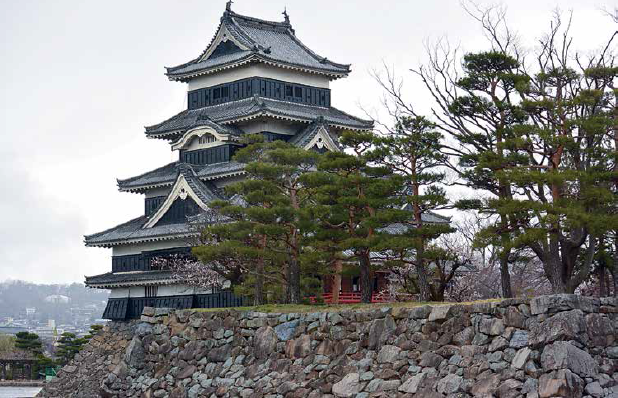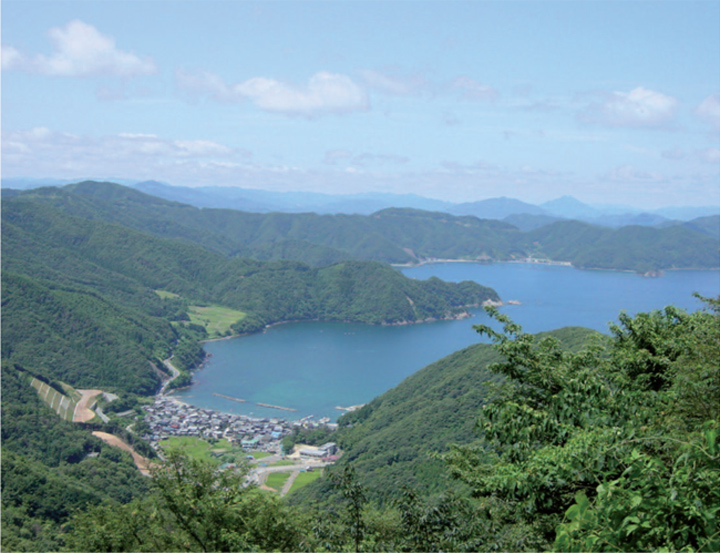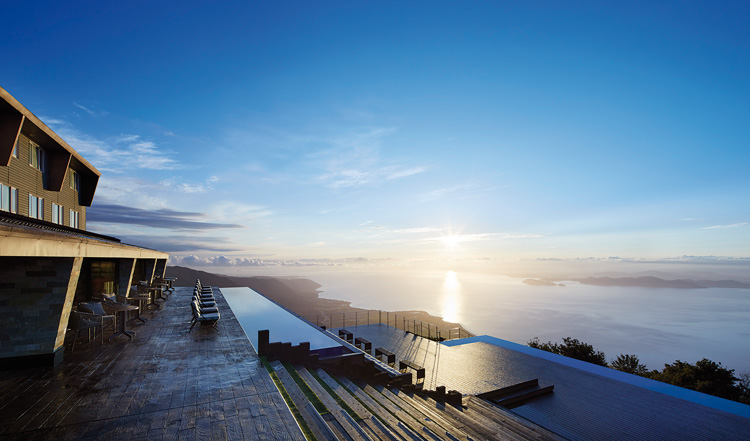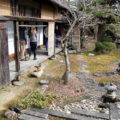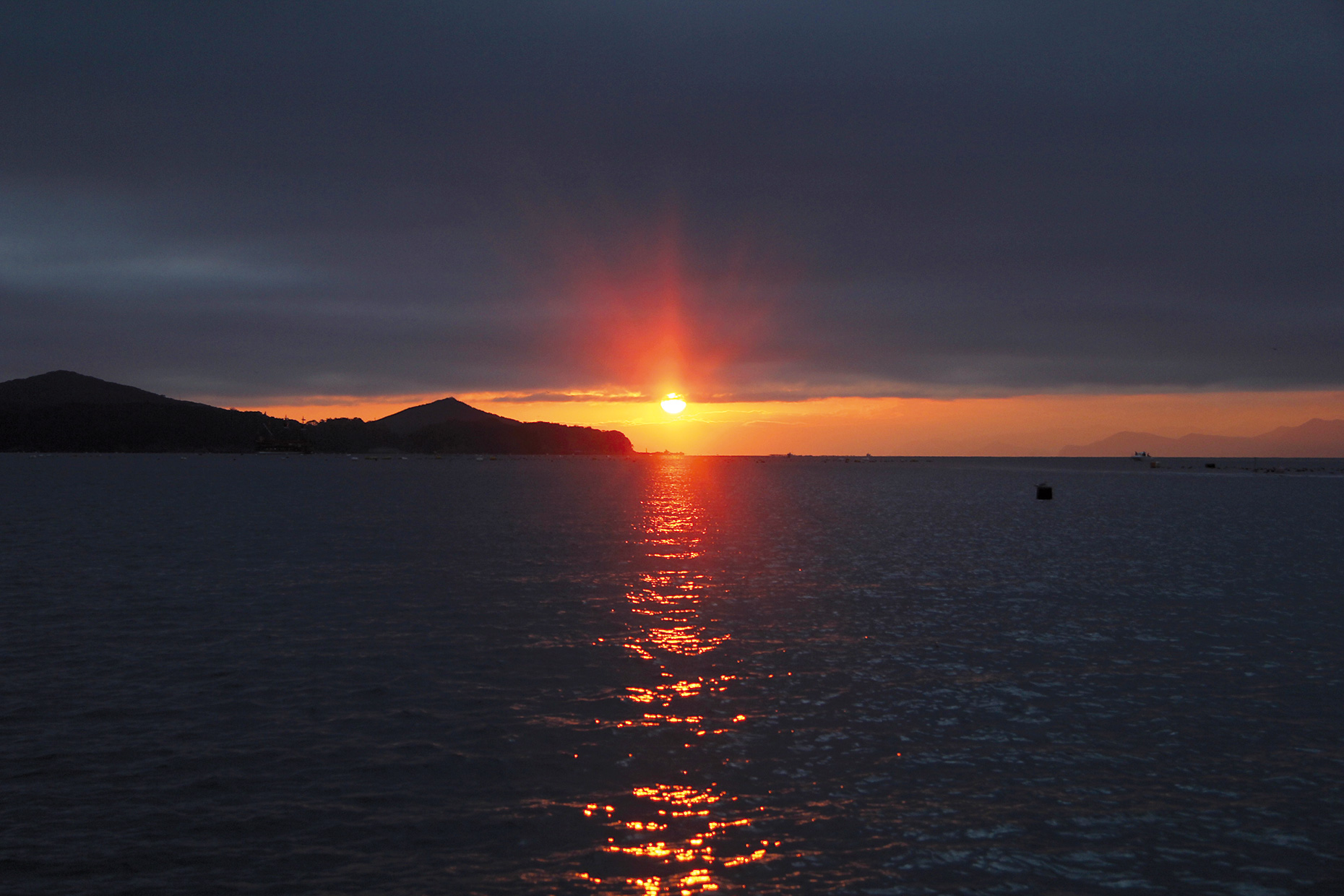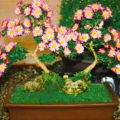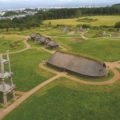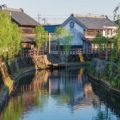

/ Eric Rechsteiner for Zoom Japan
Off the coast of Nagasaki, this archipelago was a long-time bastion of Christianity, although it was banned in Japan.
Bordered by steep cliffs and covered in densely forested mountains, the Goto Islands off the coast of Nagasaki are among the most isolated and inhospitable in Japan. And yet, at the top of hills overlooking humble fishing villages, hidden on the mountainside and accessible only by long sinuous roads, rise the towers of amazing Catholic churches. To undertake a voyage of discovery around the fifty-odd Roman Catholic churches of the Goto Islands is to plunge into the extraordinary history of Christianity in Japan.
In the wake of Portuguese traders, Christianity had a promising start in Japan with the arrival of the Jesuit missionary François Xavier in 1549. In this era of constant warmongering between rival factions, some noblemen, in particular on the southern island of Kyushu, made these new visitors very welcome – especially because of the firearms they brought with them – and were tolerant of the missionaries. Within a few decades the latter, taking advantage of the instability of the period, succeeded in converting a considerable number of people, notably in the region around present-day Nagasaki Prefecture. This meant Christianity could be practised openly. Nevertheless, in 1597 Shogun (warrior commander) Toyotomi Hideyoshi issued an edict banning the religion, which was perceived as a threat to the country’s unity, and crucified 26 Christians in Nagasaki as a warning. In the meantime, Japan had started to manufacture its own firearms, making trade with foreigners less essential. Subsequently, the isolationist Tokugawa shogunate (hereditary military dictatorship) outlawed Christianity and expelled all the missionaries. After the peninsula’s Shimabara Rebellion in 1637, which involved many peasants of the Christian faith, thousands of rebels were executed and a total ban on Christianity was strictly enforced. Christians who would not renounce their faith were tortured and forced into exile after their inquisition.
Only a few small groups of believers resisted and found refuge on the Goto Islands which, due to their isolation, provided some protection. For more than two centuries, these “hidden Christians” (kakure kirishitan) continued to practise their religion in secret, without any priests, until the United States forced Japan to open up in 1853. This stubborn resistance testifies to the resilience of the Japanese Christian faith. Considering their history, it is quite surprising that so few Christians remain today. It is estimated that they represent only 0.3% of the population. Although weddings in chapels, stripped of their religious significance, have become customary in Japanese society, Christianity has never managed to take root in the country.
On the Goto Islands, though it is by far the high-est percentage in Japan, only around 15% of inhabitants are Christians today. And yet, after 1873, when the ban on Christianity was lifted, a large number of churches were built and whole communities were established in villages with Catholic inhabitants. Life centred on the parish, something that didn’t exist anywhere else in Japan.
On Fukue Island, the main access point to the Goto archipelago, stands the elegant, redbrick Dozaki Church – an ideal entry point to this history. Consecrated in 1908, it is, after Nagasaki’s Oura Cathedral, the prefecture’s oldest Western-style church. Built by the edge of a peaceful cove in red bricks imported from Italy, its interior is decorated with simple stained-glass windows. Though most of the churches are still used as places of worship, Dozaki Church serves as a museum of the hidden Christians and the missionaries who established the religion of the Bible in Japan.
On the neighbouring island of Hisaka, the former Gorin Church is a modest building sheltered by large trees. It is accessible by boat or through the forest on foot. Its style is an astonishing mix of a traditional Japanese house on the outside, and Gothic architecture inside. The church, built entirely of wood, features an intricately designed vaulted ceilings and slender columns, and is decorated with simple sculptures of the Virgin Mary and Christ, and subtly stainedglass windows. Built in 1881, it is one of the first wooden churches in Japan and was dismantled and rebuilt close to the seashore in 1931. It had a great influence on the subsequent architectural style used to build churches in the area.
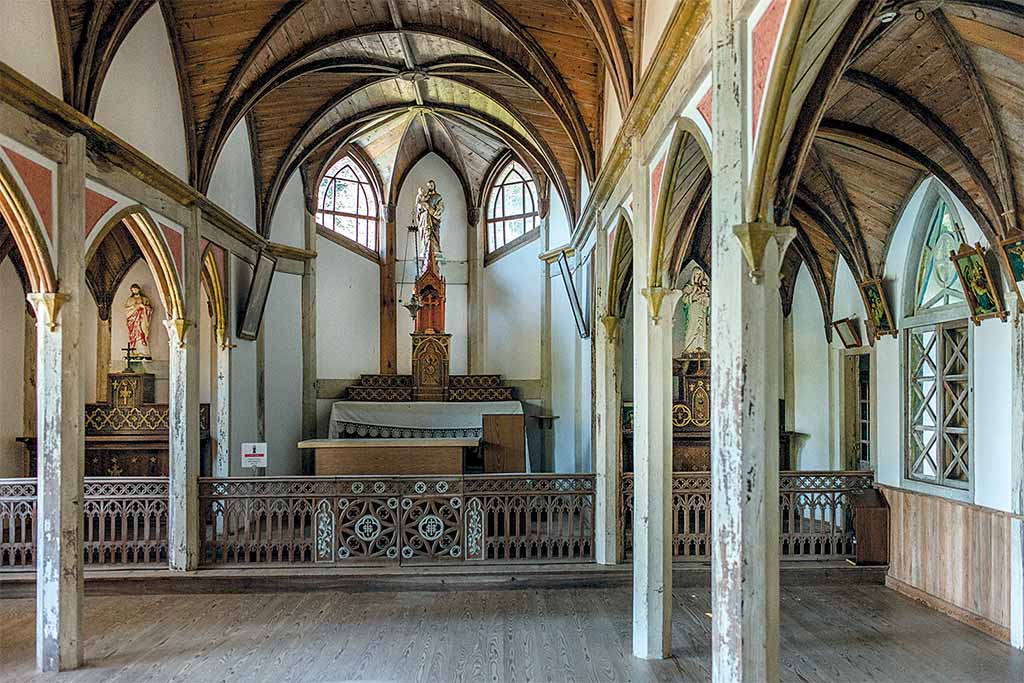
/ Eric Rechsteiner for Zoom Japan
Up until the post-war period, more than a quarter of the population of the Goto Islands were Christians. The wealth generated during years of strong economic growth affected their faith badly. Catholics were much poorer than non-Catholics, as they lived in isolated villages with no arable land in the most inhospitable regions of the archipelago, which were accessible only by sea. But in the past fifty years, roads and bridges have been built, connecting the remotest villages, and Catholics have also begun to benefit from economic progress. When people start to acquire material wealth, they begin to search for comfort and healing in material things, and their interest in the church declines. Contributing factors to the decline of Christianity are the low birthrate and rural depopulation. With the decline of the fishing industry and infrastructure, young people have moved to the towns and become assimilated into a largely non-Christian culture, and many never return. Even fewer people have been attending church in the past twenty years, especially those situated in less accessible parts of the islands, and all that remains of once thriving communities are a few very elderly faithful. The situation is critical – it is just a question of knowing which church will be the next to be abandoned. As a result, the local authorities are attempting to transform them into tourist attractions. Four, including the former Gorin Church, were added to the Unesco World Heritage List in 2018.
Further north on Naru Island, whose inhabitants are almost all fishermen, Egami Church, also listed by Unesco, was once only accessible by sea. A seemingly never-ending road running along the coast, followed by a long tunnel, means you can now discover this beautiful white church with its blue-painted windows, which resembles a doll’s house. Designed by Tetsukawa Yosuke, the father of Christian architecture in Japan, the present structure was built in 1918 thanks to funds raised by 50 families from their fishing income.
Today, the churches of the Goto Islands preserve the memory of those Christians who were ostracised, as well as numerous martyrs. Other than the richness of the architecture, what strikes the visitor is their small scale, some resembling miniature versions of European buildings. The churches all differ in style and the building materials used, whether it be wood, brick, stone or reinforced concrete. As they should be, shoes are always removed before entering.
Kashiragashima Church, in the northeast, was built with stone extracted and collected by parishioners over the course of nine years. Austere and massive in appearance, it nestles in a beautiful inlet, while the adjacent cemetery is right next to a sandy beach.
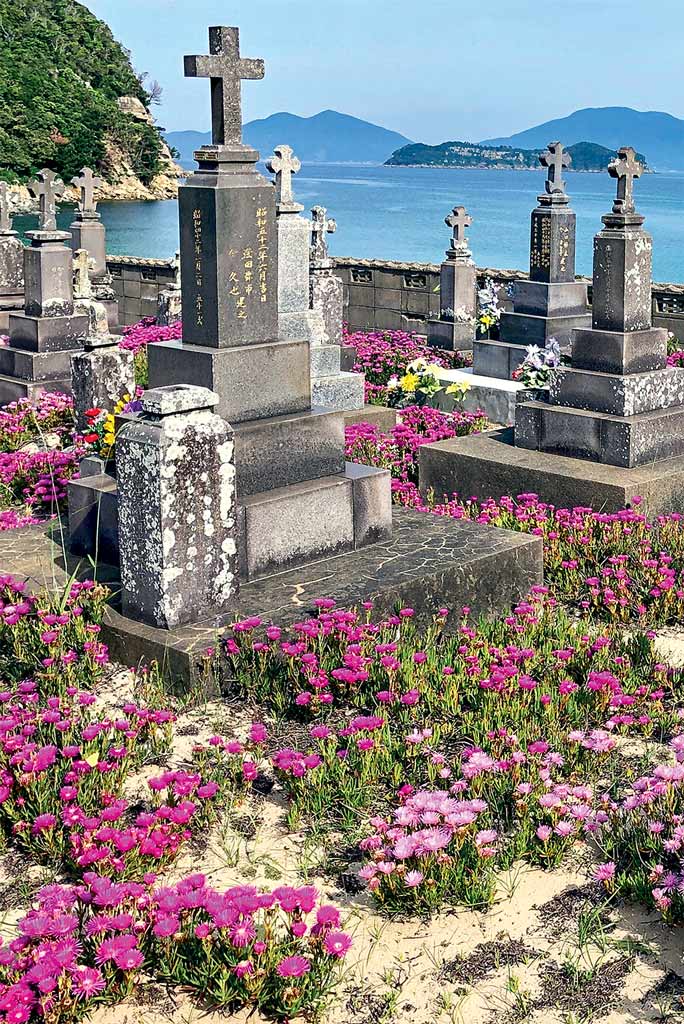
/ Eric Rechsteiner for Zoom Japan
The very long period when Christianity was prohibited, during which the hidden Christians succeeded in preserving their faith, is all the more fascinating. In the absence of places of worship or priests, and while religious objects and printed texts were in danger of being confiscated by the authorities, it was only through oral tradition that the Bible and other parts of the liturgy could be handed down. Thus, for more than two centuries, the narratives and prayers first taught by European missionaries in the 16th century were handed down from father to son in isolated communities, becoming enriched in the process with a blend of local beliefs, stories and customs.
They were rediscovered by a French priest, Bernard Petitjean, from The Society of Foreign Missions of Paris who, in 1863, was sent to Nagasaki to build Oura Cathedral. A small group of hidden Christians, having heard that a new church had been built, travelled there in the hope of seeing a statue of the Virgin Mary and, finding themselves in the presence of the first foreign missionary in two centuries, revealed their Christian faith. They were in possession of an extraordinary account based on the Bible: Commencements du Ciel et de la Terre (Beginnings of Heaven and Earth) [Les chrétiens cachés du Japon. Traduction et commentaires des Commencements du Ciel et de la Terre. (The hidden Christians of Japan. Translation and commentary of Beginnings of Heaven and Earth.) Géraldine Antille, Labor et Fides, 2007]. It was a sort of breviary written in the mid-19th century, probably out of fear that the oral tradition could be lost, which makes it possible to understand to what extent the hidden Christians “Japanesised” the biblical narrative, and to some extent reinvented their religion. Once religious freedom was restored, the majority of hidden Christians rejoined the official Roman Catholic Church. Others chose to continue practising their faith in secret, out of loyalty to the legacy passed on by their forebearers. Nowadays, only a handful of descendants of these hidden Christians (as well as one retired priest) remain in the Goto Islands, all of them very elderly.
To complete your visit, you should go in search, of the graves of these hidden Christians on one of the archipelago’s many islands sometimes marked only by simple unnamed stones placed in the forest, or in cemeteries that don’t appear on map.
Eric Rechsteiner
How to get there
High-speed trains and major airlines connect Tokyo and Osaka with Nagasaki. From there, ferries and hydrofoils provide links to the islands of Fukue and Nakadori. Churches listed as UNESCO World Heritage Sites are only open by appointment.


